They say nostalgia makes everything sweeter—but some snacks from the past have us seriously questioning that. From pudding-based roll-ups to soda that looked like a science experiment gone wrong, these discontinued treats weren’t just strange—they were downright controversial. Whether they sparked health debates, baffled parents, or just left a weird aftertaste, each of these vintage snacks has a cult following… and a long list of skeptics. So buckle up for a flavorful trip down memory lane as we revisit 13 retro food items so questionable, some people still wonder how they ever made it onto store shelves.
1. Lay’s WOW Chips (Olestra Edition)
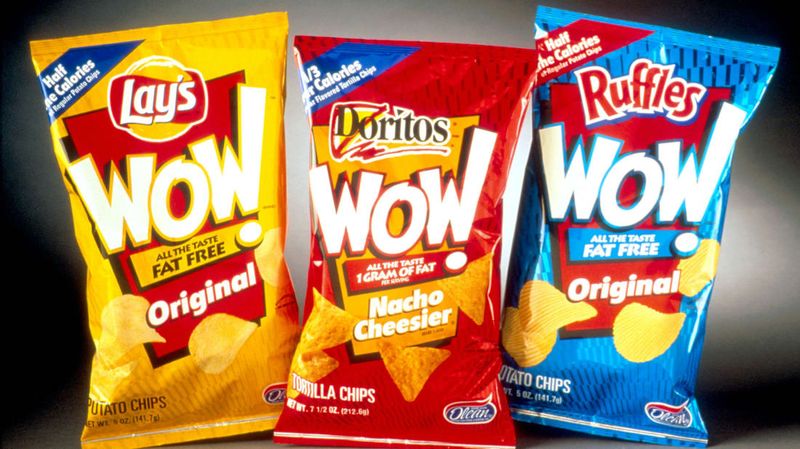
The weight-watcher’s dream quickly became everyone’s bathroom nightmare. Introduced in the 1990s, these fat-free chips contained Olestra, a fat substitute that slipped through your digestive system unabsorbed.
Sounds great until you read the warning label that mentioned “loose stools” and “anal leakage” as potential side effects. Yes, actual FDA-mandated warnings on a snack food!
People nicknamed them “leakage chips” after countless consumers experienced unexpected trips to the bathroom during movies, dates, and work meetings. The humiliation of thousands led to their eventual downfall, teaching us all that sometimes, real fat is the lesser evil.
2. Orbitz Soda
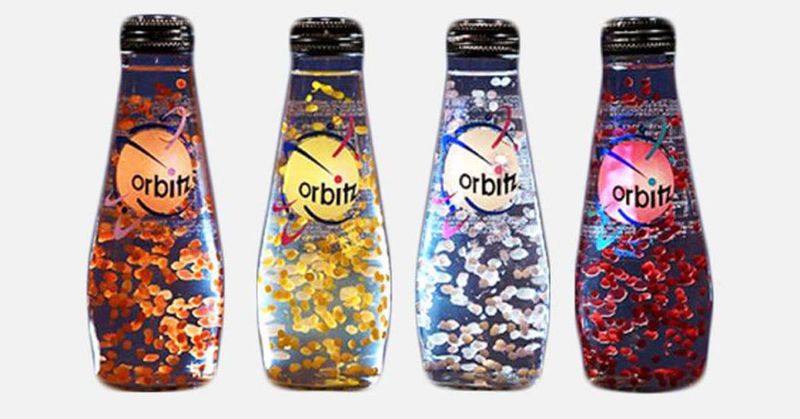
Part beverage, part lava lamp, entirely confusing to your mouth. Launched in 1996, this non-carbonated fruit drink featured colorful gelatin balls suspended in a clear liquid, creating an otherworldly visual that screamed “science experiment” more than “refreshment.”
The floating orbs had a bizarre texture that didn’t match the drink – imagine swallowing flavorless frog eggs while sipping fruity water. Children begged parents for it based on looks alone. Adults usually took one bewildered sip before questioning their life choices.
Despite marketing efforts positioning it as “texturally enhanced alternative beverage,” consumers ultimately decided drinking something resembling a petri dish wasn’t appetizing.
3. Teenage Mutant Ninja Turtles Pies
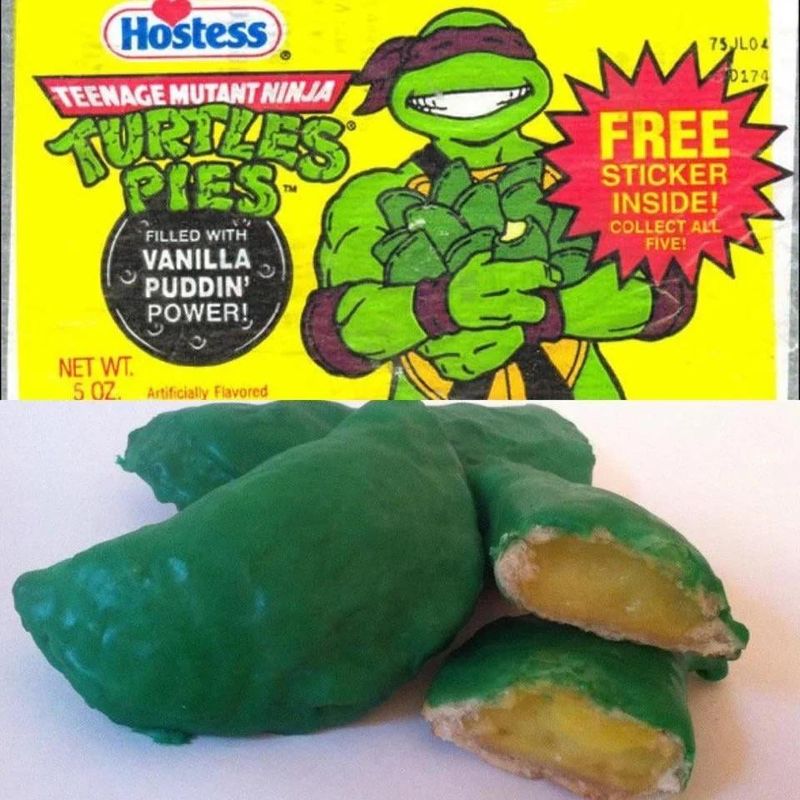
Cowabunga, dude! These radioactive-looking pastries from 1991 contained a blindingly green-frosted crust filled with vanilla pudding the color of toxic waste.
The neon green exterior wasn’t just food coloring – it was a commitment to the turtle theme that stained tongues, teeth, and probably internal organs. Parents nationwide discovered their children transformed into walking biohazards after consuming these treats.
The filling had the consistency of slime and tasted vaguely of chemicals with hints of vanilla. Though wildly popular during the height of turtle mania, these pies disappeared faster than you could say “heroes in a half shell,” possibly because dentists and pediatricians staged a nationwide intervention.
4. Butterfinger BB’s
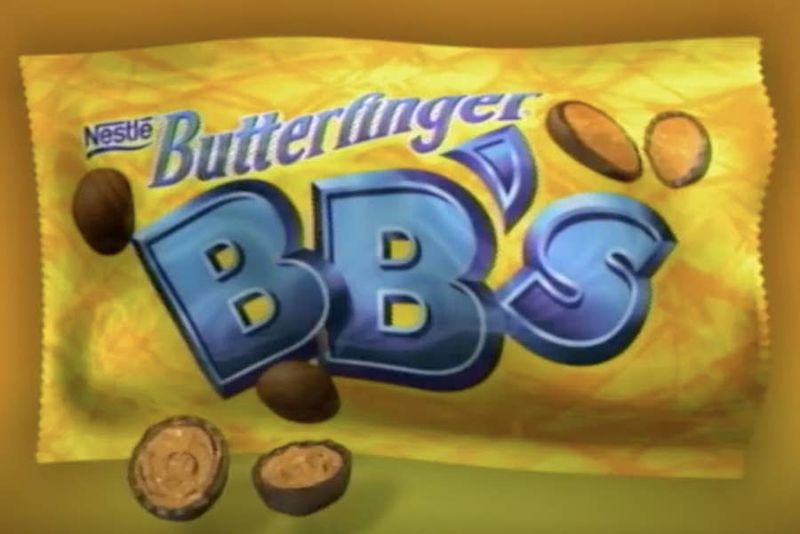
Remember those little yellow spheres of peanut butter and crisp that threatened to crack your molars? Introduced in the ’90s, Butterfinger BB’s were essentially miniaturized Butterfinger bars shaped into marble-sized balls – perfect for popping or launching at unsuspecting classmates.
The tiny treats came in a resealable pouch that somehow always ripped completely open, spilling sticky orbs throughout backpacks and car seats. Their unique talent was adhering to fillings with supernatural strength.
Despite their dental danger and mess-making abilities, children mourned their discontinuation in 2006. Some adult fans still petition for their return, apparently forgetting the painful dentist visits and orange-stained fingers that characterized the BB’s experience.
5. Jell-O Pudding Pops
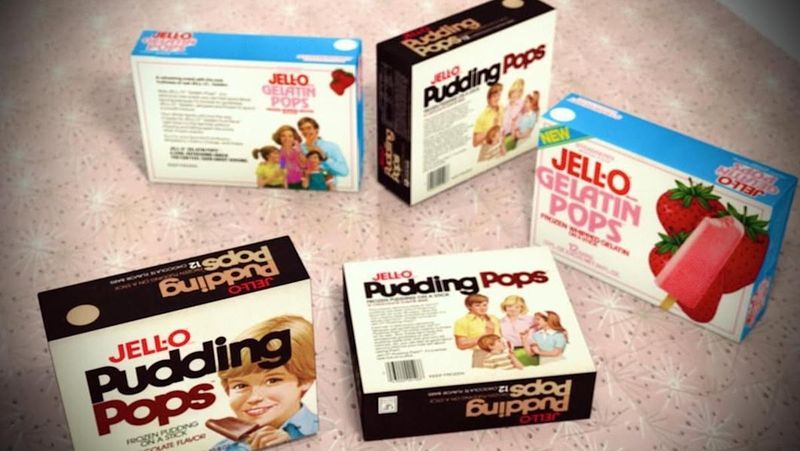
Before their unfortunate association with Bill Cosby, these frozen pudding sticks were the highlight of 1980s freezers. Unlike today’s carefully crafted frozen treats, Pudding Pops had a peculiar texture – simultaneously creamy yet icy, with tiny crystals that scratched the roof of your mouth.
The chocolate version left a waxy film on your tongue that lingered longer than the actual flavor. Parents loved them because they were less messy than ice cream, ignoring the fact that they melted into brown sludge within minutes.
Despite their flaws, kids nationwide threw tantrums when these disappeared from stores. A brief revival attempt in the early 2000s failed when consumers realized their nostalgia tasted better than the actual product.
6. Cereal-Inspired Snack Bars with Marshmallow Glue
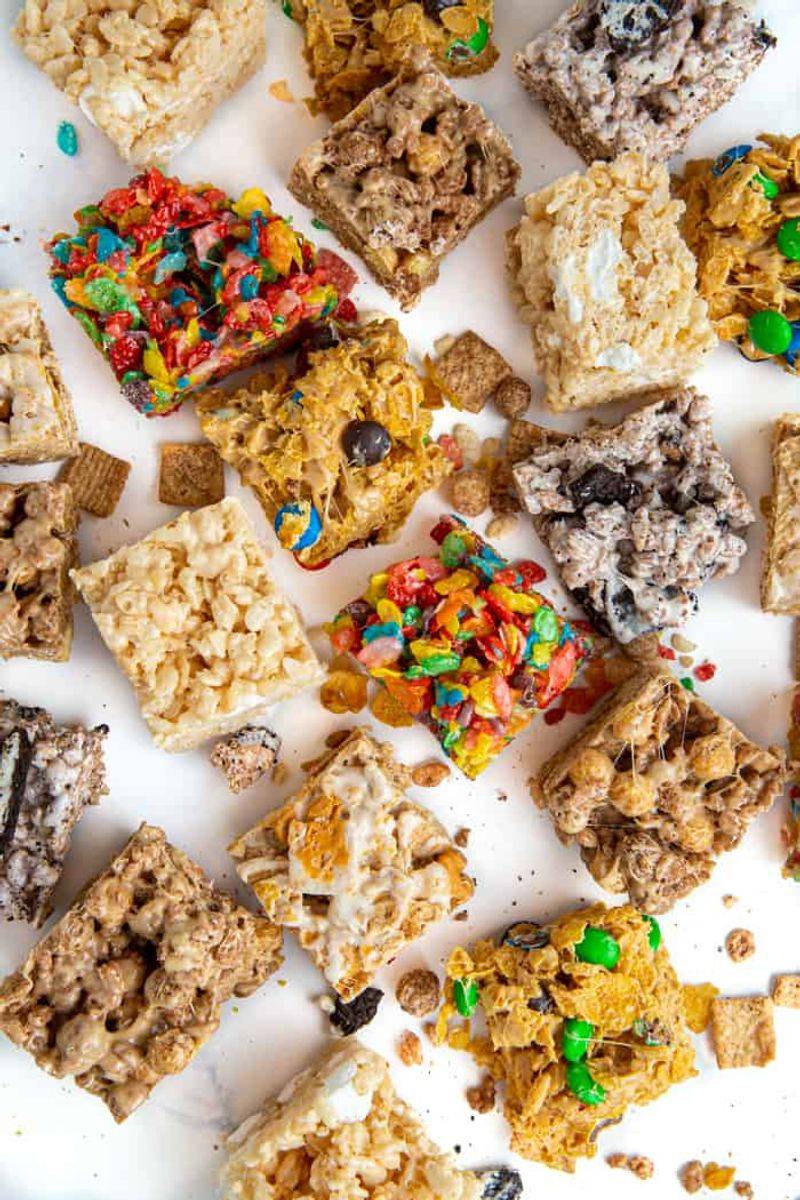
Sugar cereal wasn’t destructive enough on its own, so food scientists created these diabetic nightmares by gluing cereal pieces together with marshmallow cement. Lucky Charms and Fruity Pebbles versions were particularly popular, delivering approximately 800% of a child’s daily sugar allowance in one sticky rectangle.
Eating these required commitment – the marshmallow adhesive stuck to everything: teeth, fingers, furniture, siblings’ hair. Schools eventually banned them after teachers complained about desk surfaces permanently bonded with rainbow cereal fragments.
Parents who purchased these for lunchboxes often received strongly-worded notes from teachers about the hurricane of hyperactivity that followed consumption. Modern nutritionists would likely classify these bars somewhere between “candy” and “controlled substance.”
7. Mountain Dew Pitch Black (Original Version)
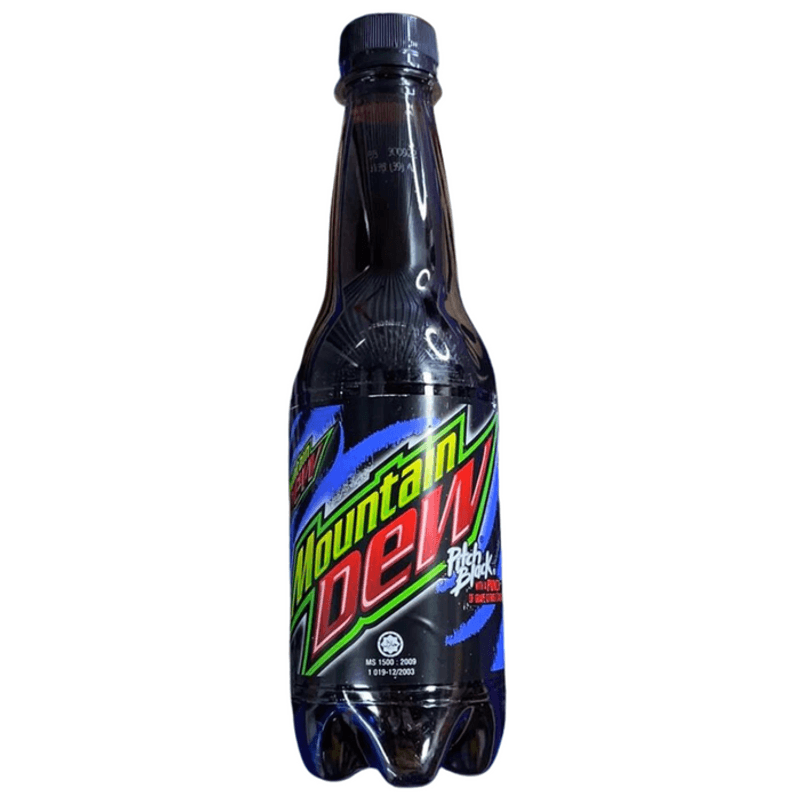
Halloween 2004 birthed this unholy concoction – a grape-flavored Mountain Dew that looked like motor oil mixed with purple food coloring. The original formula contained enough caffeine to jumpstart a small vehicle, plus mystery ingredients that turned tongues an alarming shade of black-purple for days.
Parents nationwide were horrified when children returned from sleepovers appearing to have consumed toxic waste. Dentists reported seeing tooth enamel dissolve in real-time after exposure. Despite (or because of) its questionable properties, teens developed cult-like devotion to this beverage.
Each limited release triggered hoarding behaviors, with bottles appearing on eBay at astronomical prices. The drink has vanished and reappeared more times than a horror movie villain.
8. Reese’s Peanut Butter & Banana Creme Cups (Elvis Edition)
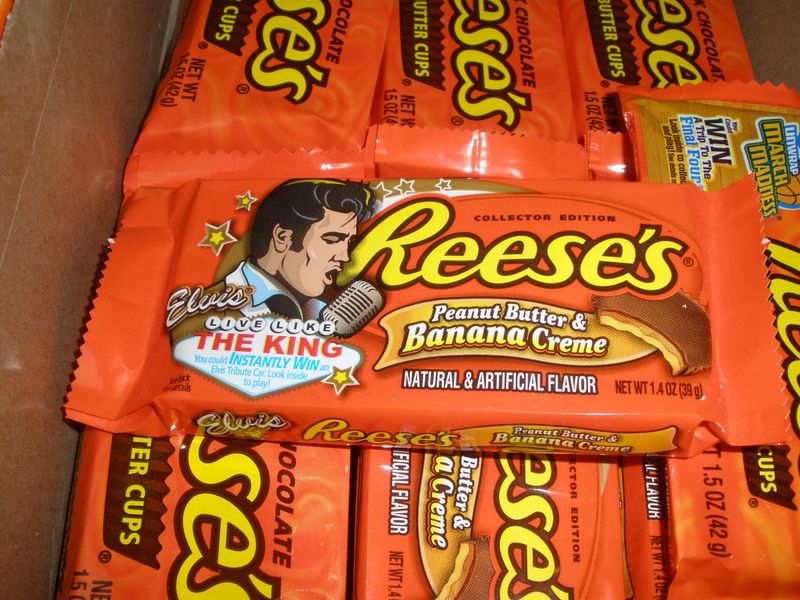
The King’s favorite sandwich became a questionable candy in 2007, combining chocolate, peanut butter, and artificial banana flavor that resembled medicine more than fruit.
These limited-edition monstrosities smelled like someone had spilled banana Runts into regular Reese’s cups. The banana creme portion had an uncanny valley quality – not quite banana, not quite edible, just existing in a liminal space between candy and pharmaceutical experiment.
Brave souls who tried them reported an aftertaste that lingered with the persistence of Elvis’s cultural legacy. Much like the King himself in his later years, these cups were a bloated, excessive version of something once great. Mercifully, Hershey’s ended this particular tribute before it could do more damage to Elvis’s culinary reputation.
9. Dunkaroos (Original Formula)
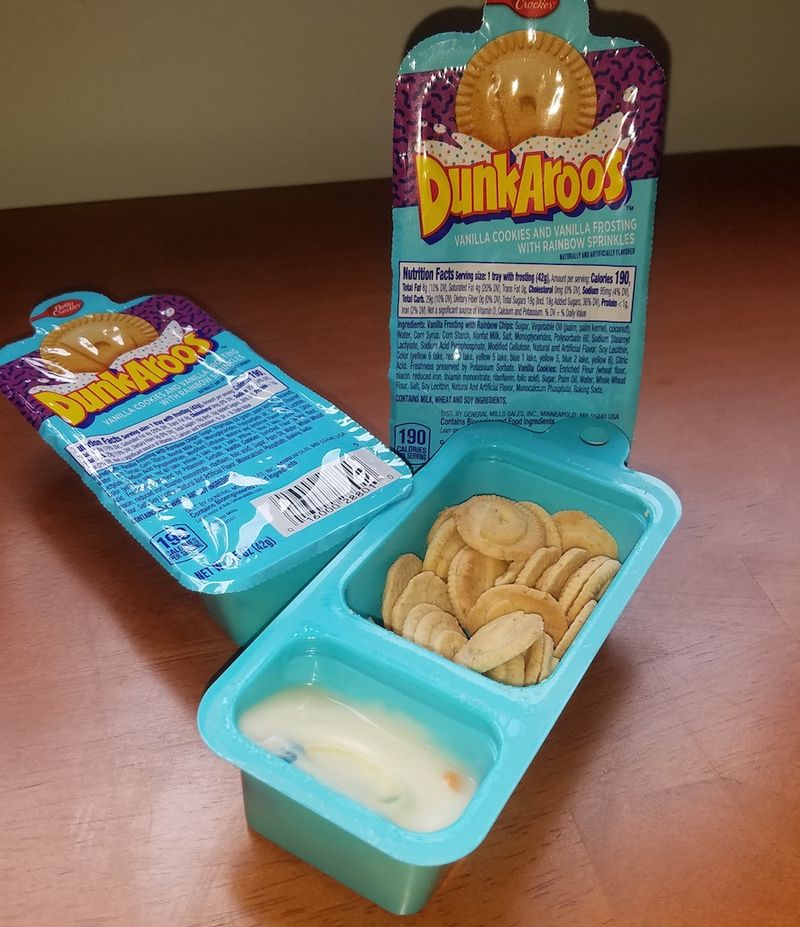
The snack that taught a generation that frosting could be a main course, not just a topping. Original Dunkaroos featured cookies that were essentially vehicles for consuming unholy amounts of sprinkle-laden frosting that contained more chemicals than a laboratory.
The frosting came in colors not found in nature – electric blue, radioactive pink – and somehow never fully hardened, even when left open for days. This peculiar preservative miracle raised questions nobody wanted answered.
Children developed strategic dunking techniques to maximize frosting intake, often abandoning cookies entirely to scoop directly with fingers. When they disappeared from American shelves, desperate parents paid Canadian smugglers to ship them across the border, proving addiction comes in many forms.
10. Hershey’s Swoops
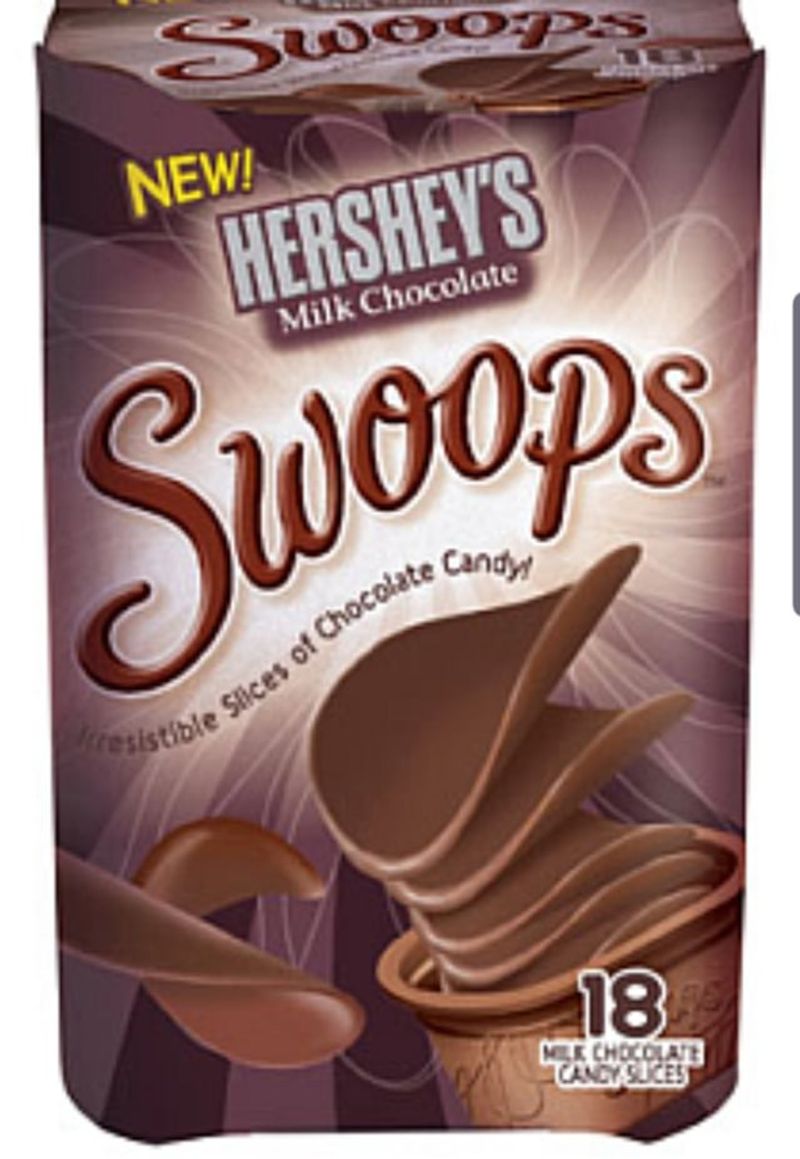
Someone at Hershey’s asked the question nobody needed answered: “What if chocolate came shaped like Pringles?” Swoops were thin, curved slices of chocolate that melted instantly upon touch, ensuring maximum mess and minimum satisfaction.
Available in various Hershey’s flavors including Reese’s and Almond Joy, these impractical treats came in Pringles-like cans but lacked the structural integrity to be handled by human hands. Summer temperatures transformed entire containers into chocolate soup.
The bizarre shape served no purpose except to confuse your brain, which expected a salty chip but received sweet chocolate instead. This cognitive dissonance, combined with their melt-on-sight quality, led to their merciful discontinuation in the mid-2000s after consumers collectively asked, “But why though?”
11. Jell-O 1-2-3

The dessert that promised magic but delivered confusion. Introduced in 1969, Jell-O 1-2-3 separated into three distinct layers when prepared – gelatin on bottom, mousse in middle, and creamy topping on top.
At least, that was the theory. In reality, most home cooks produced a gradient blob with vaguely different textures that all tasted identical. The chemical wizardry required to make a powder transform into three distinct layers should have been our first warning sign.
Despite the frequent disappointment, families continued trying to achieve the perfect layers shown on the box. The dessert’s discontinuation in 1996 spared future generations from experiencing the unique combination of hope and letdown that was Jell-O 1-2-3.
12. Pudding Roll-Ups
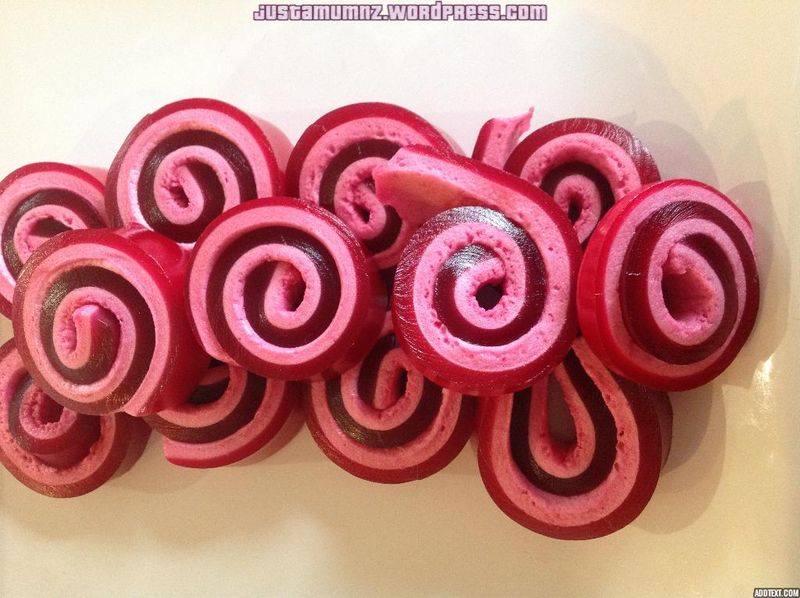
The unholy marriage of Fruit Roll-Ups and pudding should have remained an unspoken thought. These 1980s abominations featured pudding flavors (chocolate, vanilla, butterscotch) transformed into leathery sheets that stretched like rubber and had the mouthfeel of sweetened plastic.
Unlike their fruit counterparts, Pudding Roll-Ups didn’t peel cleanly from their backing. Children would end up with fragments of wax paper stuck to their snack, adding an unexpected fiber element to the experience. The texture was truly baffling – simultaneously chewy, slippery, and somehow both wet and dry.
They left an oily film on fingers and tongues that required industrial-strength soap to remove. Their merciful discontinuation spared future generations from questioning whether pudding should ever be shelf-stable.
13. Wonder Ball Candy-Filled Chocolate Spheres
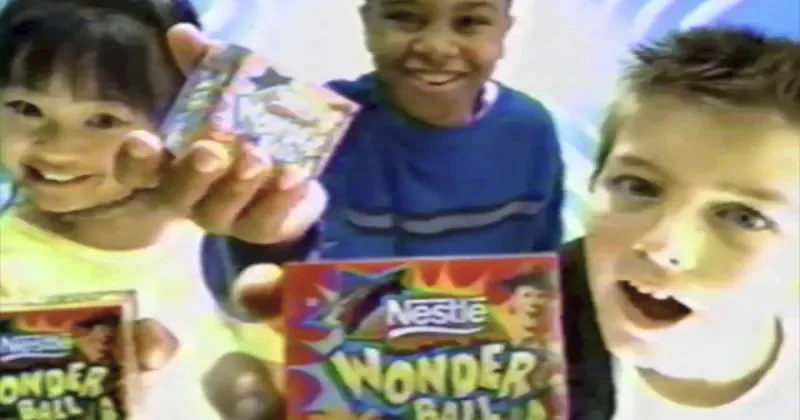
Before choking hazard awareness reached its peak, Nestlé created hollow chocolate balls with small toys inside. After several near-disasters, they replaced the toys with hard candies – because apparently, choking on candy was somehow safer than choking on plastic.
The chocolate shell was paper-thin and shattered upon touch, sending tiny candies scattering across floors and into the eager mouths of family pets. Each ball contained approximately three cents worth of sugar pellets that tasted like sweetened chalk.
Children cared more about the character-themed packaging than the underwhelming contents. Parents nationwide quietly celebrated when these disappeared, no longer having to vacuum mysterious hard candies from under furniture or explain to emergency room doctors what exactly their child had attempted to inhale.
Leave a comment